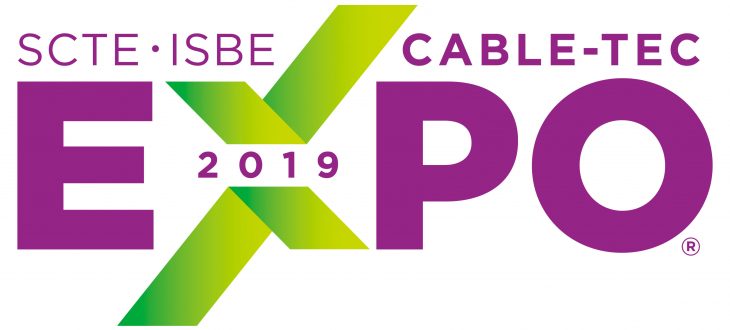
NEW ORLEANS – Ending months of squabbling over the industry's next-generation broadband specifications, cable's tech leaders have decided to split the difference by pursuing two separate, but related, paths to the promised 10 Gig future at the same time.
Speaking at the SCTE ISBE Cable-Tec Expo show here earlier this month, cable technologists hailed the two "complementary" routes they plan to take to deliver much higher data speeds under the uniform banner of the next-gen DOCSIS 4.0 specs. The two routes are: Full Duplex DOCSIS (FDX), a technology that will enable upstream and downstream data traffic to run over the exact same spectrum; and Extended Spectrum DOCSIS (ESD), an option that will leverage RF spectrum beyond the industry's current 1.2 GHz bandwidth ceiling.
With the spec peace accord, the rival camps from North America's two largest cablecos – Comcast (which embraces FDX) and Charter Communications (which favors ESD) – are now both onboard with the future direction of the 20-year-old DOCSIS standard. As a result, the new D4.0 specs, which will now be drafted at CableLabs and ready early next year, will fully support both approaches over the industry's hybrid fiber-coax (HFC) networks.
Noting it doesn't have to be an either/or proposition, John Williams, vice-president of outside plant engineering and architecture at Charter, said it's incumbent upon the industry to support both technologies now. "In order to do this, we need to look at the synergies and embrace ESD and FDX as the next generation of HFC," he said. "It's all about scale."
Robert Howald, a fellow in Comcast's next-generation access network unit, fully agreed, calling ESD and FDX a "perfect complementary pair" for the pending DOCSIS 4.0 specs. Since both ESD and FDX focus on boosting the upstream path of the HFC network, Howald argued they can be used together to deliver speeds well beyond the 10 Gbps symmetrical goal of the industry.
"For now, there's two awesome technologies going into DOCSIS 4.0," Howald said, "You can see that path converging to 25G."
The two sides came to an agreement after it became clear that neither camp would prevail over the other and that the industry simply isn't large enough to support dueling DOCSIS specs. While Comcast isn't quite big enough to drive an FDX vendor ecosystem by itself, the rest of the industry isn't quite big enough to drive a separate ESD-focused effort either.
“You can see that path converging to 25G.” – Robert Howald, Comcast
As mentioned above, both FDX and ESD aim to create more broadband capacity for cable operators, albeit in very different ways. FDX calls for running both upstream and downstream data traffic on the same block of spectrum, rather than different blocks as is done currently. The rub is that it requires a "node+0" architecture, which means fibre must be installed far deeper in the access network in order to eliminate all the signal amplifiers on the coax cable running between the fibre node and customer homes.
In contrast, ESD calls for extending the RF spectrum ceiling well beyond today's 1.2 GHz limit, starting with 1.8 GHz today and going at least as high as 3 GHz tomorrow. With so much added spectrum at their disposal, cablecos could continue to split the spectrum dedicated to upstream and downstream traffic, just as they do now.
Besides settling the dispute over the industry's direction with its HFC networks, the pending DOCSIS 4.0 specs will also set the stage for more DOCSIS specs to come. In particular, the 1.8 GHz and 3 GHz spectrum ceilings now envisioned will likely prove to be just temporary way stations in the ever-evolving family of DOCSIS specs.
Speaking at a show breakfast forum sponsored here by Light Reading, Jeff Finkelstein, executive director of advanced technology at Cox Communications, said cable technologists are already exploring how to push the bandwidth ceiling even higher to 6 GHz. Such a move would the life of the industry's HFC networks even further into the future since cable operators wish to resist costly full fibre-to-the-premises rebuilds their telco competitors have been forced to do.
Finkelstein said cablecos and vendors are already checking into 3 GHz passive devices that could help future-proof HFC for that next big bandwidth leap. Likewise, he said, CableLabs could later craft new DOCSIS spec that envisions a 3GHz network and sets the stage for even further bandwidth expansion.
"Stories of DOCSIS's demise has been reported for 20 years," he said. "We have a long way to go."



